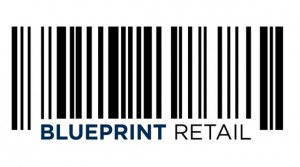Assortment Planning
Assortment Planning at leading retailers is grounded in a deep understanding of the customer, analytical analysis of historical product performance, and a forward looking strategic plan focused on execution.
A robust Assortment Planning process is often overlooked by retailers and can result in product delays, costly change orders, and indecision among internal teams.
In worse case scenarios lack of Assortment Planning impacts the customer in a non-unified product presentation. We have developed methodologies for incorporating a best in class assortment planning process that enables the organization to move from hindsight to insight to action.
Assortment Optimization
Do you wonder if you are over or under assorted? Do you have a strategic approach to analyze and determine assortment levels across all categories and divisions? Assortment is often the root cause of many common retail challenges such as excessive markdowns and stock-outs. The optimal assortment is unique to each business, however, there are general guidelines based on business model and operating channel:
The Internet’s “Endless Aisle”
- Internet only retailers leverage the “long tail” concept by offering a very broad assortment and act as category killers in some cases. Amazon, for example, invests their inventory purchase in the “head” and leverages 3rd parties to offer the “tail” as part of the total assortment without owning the inventory and financial risk.
Bricks & Mortar Retail
- Store based retail can typically only afford to assort to the “head” of the total market curve – choosing lower total sales for higher total margin – because the inventory investment necessary to support the tail increases exponentially when you spread that inventory across a large store base.
Blueprint Retail has proven techniques to analyze an organization’s Assortment across all categories and to build strategies and processes to identify the optimal Assortment.
Pricing Strategy
Many retailers allocate only a small fraction of time to Pricing Strategy yet it is one of the most important factors to a customer’s purchase decision. An effective Pricing Strategy should employ a holistic approach and be developed in conjunction with the organization’s assortment and inventory strategy. Pricing Strategy objectives include:

Product Localization / Customer Segmentation
In many ways the retail is ready to come full circle, back to a time when local stores have assortments tailored to the tastes and demands of their local customer base. Gone are the days when standard cookie cutter assortments, adjusted mostly for size of the store and climate, can be sent to hundreds of stores across the country and expect positive results in every location. Customers are seeking out something unique, and those that fail to deliver will be seen as a commodity and forced to play the promotion / markdown race to the bottom.
We have developed complex analytical models that leverage data from stores, websites, social media, customer surveys and others to generate actionable clusters and segments. Inputs typically include; sales, traffic, customer and regionally specific demographics / psychographics, click through patterns and site behavior.
We don’t leave you with a highly technical useless set of statistical reports. We have taken localization and broken it down in a way that organizations can digest and manage using a practical step wise approach to maximize bottom line impact while minimizing disruption to your teams.


